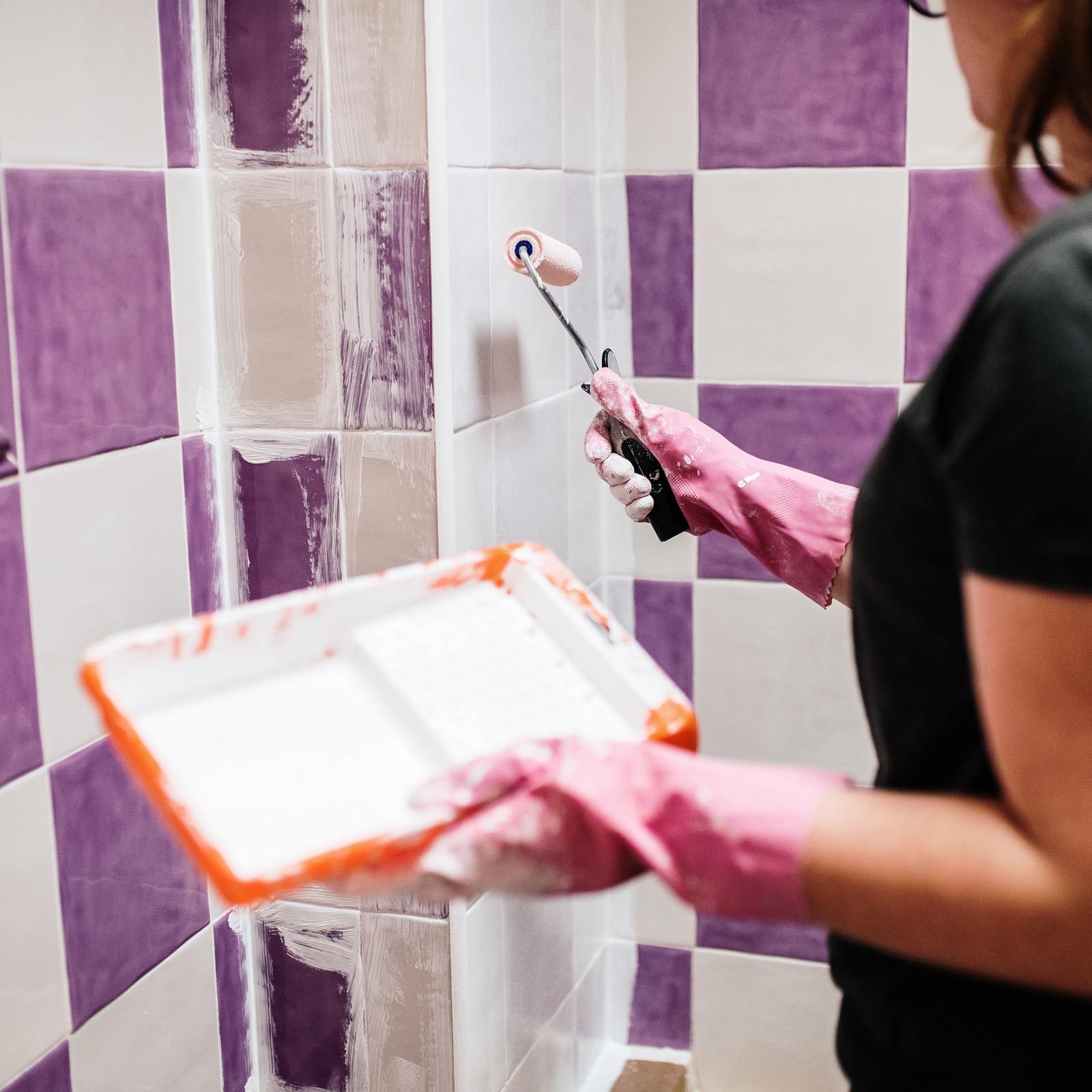Yes, you can paint bathroom tile. But you need to carefully clean and prepare the tile, and you need the right kind of primer.
Our editors and experts handpick every product we feature. We may earn a commission from your purchases.Learn more.


Yes, you can paint bathroom tile. But you need to carefully clean and prepare the tile, and you need the right kind of primer.
Our editors and experts handpick every product we feature. We may earn a commission from your purchases.Learn more.
One of the advantages of tile is its permanency. Once properly installed, grouted and sealed, the tile is there to stay. This longevity can also be a drawback when it loses its luster, or you’re just tired of it, because demolishing tile is a major project. Rather than go to all the trouble, many homeowners choose to leave the tile as is and paint it instead. As someone who’s painted tile several times, I can tell you it’s an easy and cost-effective way to give bathroom tile a fresh, new look.
Here to help explain how to paint bathroom tile are two industry experts: Rachel Otto from Fleury Lumber and Doug Curving from Sherwin Williams.
On This Page
“Painting tile is pretty straightforward,” Curving says. There are, however, some important considerations.
Prep work is more intensive when painting tiles. The high gloss finish must be cleaned and scuffed with sandpaper before you paint. “Like any other painting project, you want the surface to be clean, dull and dry,” Curving says.
Both pros point to a good bonding primer as crucial to successfully painting tile. “Think of it as a paint equivalent of glue,” Curving says. Primer bonds to the glossy tile surface, then the paint bonds to the primer.
Regarding paint, Curving and Otto agree that once a good bonding primer is applied, any interior acrylic wall paint can be used as a top coat. “For better durability, choose a higher quality paint,” Curving says. I always use Benjamin Moore’s Regal interior paint when painting tile.
Avoid painting tile with cracks or crumbling grout. Consider covering less-than-perfect tile with a vinyl liner or wall panel.
There are lots of benefits to painting bathroom tile.
As with any painting job, the quality and longevity depend on the prep work. Additionally, the importance of using a quality bonding primer can’t be overstated.
Here’s a quick overview of the prep and painting procedure:
Eight to ten years, depending on the paint and room use.
“As long as the paint is put on correctly, it will hold up as long as any paint will,” Otto says. If you’ve done your prep work properly, it shouldn’t crack or peel, so you can always freshen it with a new coat.
It depends. If you’re on a tight budget, the tile is in good shape and just needs an updated color, then painting is the better option. If, on the other hand, your tile is cracked, with crumbling grout and you absolutely hate it? Replacing it is the better choice.
No. Excessive moisture and poor ventilation in the bathroom cause mold. However, Otto cautions to “make sure your grout does not have mold or mildew before painting it, or the mold can continue to grow underneath the paint.”
Rachel Otto is a Benjamin Moore paint specialist at Fleury Lumber in Easthampton, Massachusetts.
Doug Curving is a sales service representative for Sherwin-Williams with Lowe’s business unit. He has more than 20 years of experience in the paint industry.